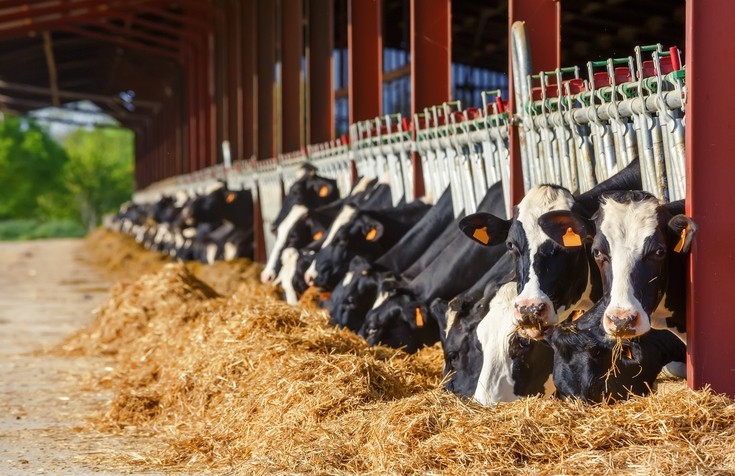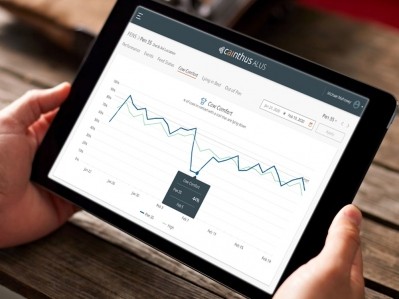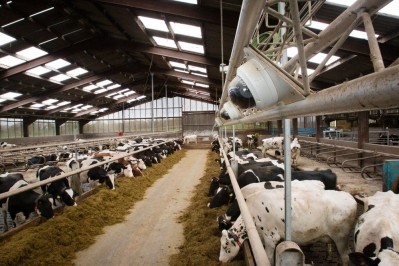Cainthus in strategic partnership with Cargill
Efficient feed, water use focus in ag-tech partnership

Cainthus, which designed and produces the visual tracking systems for use in dairy facilities, announced a strategic partnership with Cargill last week. The deal included a minority equity investment by Cargill, but financial elements of the arrangement were not disclosed at that time.
The partnership will help Cainthus as it works to scale up production and installation of its technology in dairy facilities on a global level, said David Hunt co-founder and president of Cainthus.
“Effectively what we’re doing is a staggered scale-up on a commercial basis by the end of the summer,” he told FeedNavigator. “We’re scaling up in terms of manpower and sales team – it will take a number of months.”
Cainthus is a machine vision company with facilities in Dublin, Ottawa and San Francisco. It seeks to turn visual information in usable data with the goal of improving performance and reducing inefficiency in production for agricultural industry stakeholders.
Tracking cows and product launch
The tracking system uses visual data and predictive imaging to follow the health and behavior of animals, said Cainthus.
Once the system is installed, it is immediately able to offer pen-level analytics and information, said Hunt. With additional calibration is also provides cow-level details and information.
The system varies based on barn size rather than number of cows, he said. “We’ve done trials at the 120 cow-level and we know it offers extremely strong value at 120 cows, and it offers more at 1,000,” he added.
“If you make a mistake in your feed mix at 1,000 cows it’s more [costly] than with 120 cows,” he said. “Also it’s easier to notice that something is wrong at 120 cows.”
Initial production alerts generated by the system have found a series of trends in common mistakes made in feeding, water use and facility layout, he said. “If there is an area where the animals aren’t feeding we can tell you, if you put a new feed mix out and the animals start rejecting it you get an immediate alert, and one of the other, more important, alerts is we can tell how optimal your stocking ratio is,” he added.
“Every barn we’ve installed it in we’ve found big issues that the farmers were oblivious to,” said Hunt. “We’ve yet to install it [in a facility] where the cows were getting enough water and that really translates into milk production, and [producers] aren’t leaving enough feed at night and [the cows] are running out of food every night, and we’ve been commonly finding issues with fans and airflows – the way they laid out the barn they are upsetting the cows and cows refuse to go into those areas.”
The technology is being launched at this time for use in dairy production facilities, he said. However, efforts directed at work in beef cattle feedlot-type facilities are ongoing.
“The [next] goal is beef – we’re not completely market ready yet,” he said. “And we expect to do pigs by the end of the year.”
There already has been some research and development work done looking at poultry production at the barn level, he said. Aquaculture also is an area of interest, but there is no timeline for work with that sector.
The release is global and facilities in several countries, including the US, Canada, Italy and Spain, have already had installations take place, said Hunt. “My personal view is we live in a global marketplace, you should be presenting globally as soon as you can – that’s what we’ve been doing – again, this is the strength of someone like Cargill as a partner,” he added.
Partnership opportunity
The partnership with Cargill offers an opportunity that is not always available when working with venture capital firms, said Hunt. When Cainthus had been working through financing rounds there was an interest in having a strategic partner that could help provide a route to take products to the market.
“Selling to farmers is hard,” he said. “It’s not like consumer sales or business to business sales – we always wanted an ag partner.”
The process moving toward the establishment of the partnership also involved a strong validation of the technology that Cainthus developed, he said. “We were so happy to go through such due diligence testing – that really prepared us well for what we’re going to go through in the next year,” he added.
For Cargill, the partnership continues an ongoing effort to invest in technology to provide support in data and analytics, the company said. Precision farming and improved efficiency are focuses for the agri-giant.
“Our shared vision is to disrupt and transform how we bring insights and analytics to dairy producers worldwide,” said SriRaj Kantamneni, managing director for Cargill’s digital insights business, in a release on the partnership. “Our customers’ ability to make proactive and predictive decisions to improve their farm’s efficiency, enhance animal health and wellbeing, reduce animal loss and ultimately increase farm profitability are significantly enhanced with this technology.”











